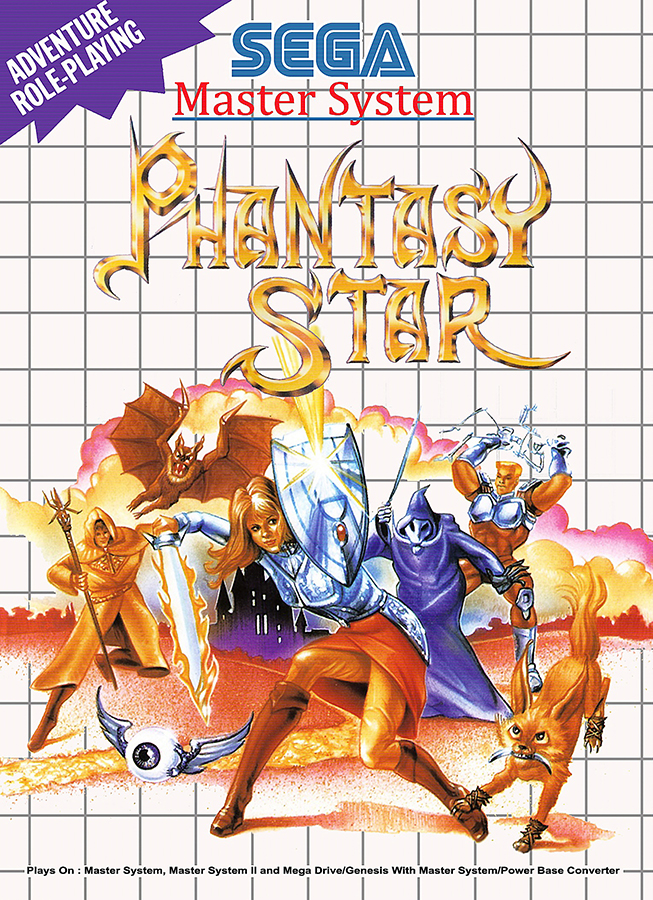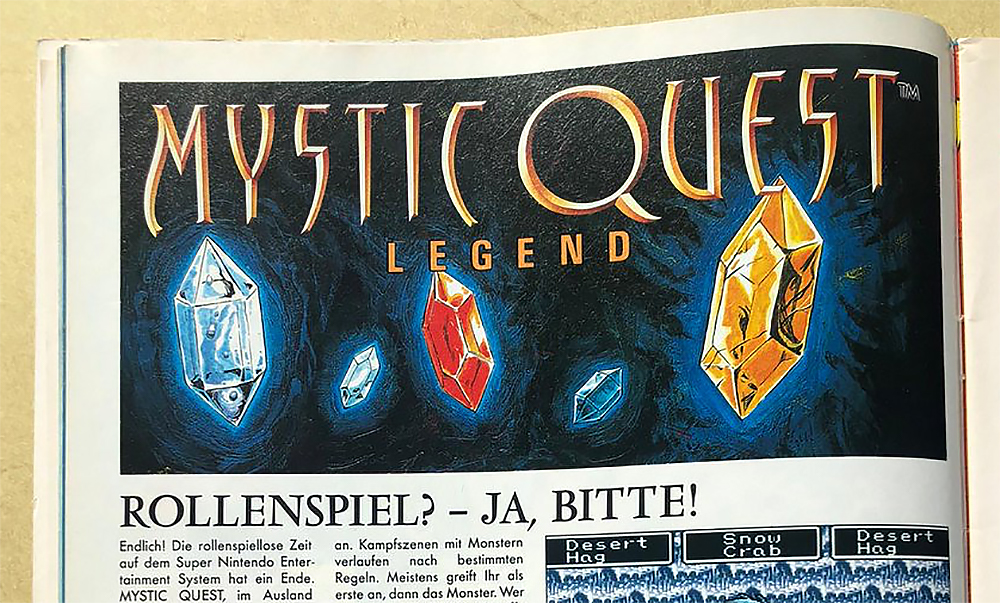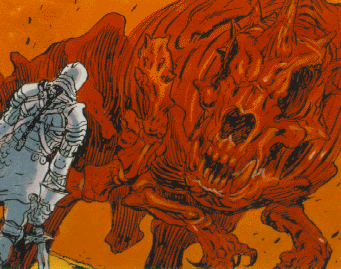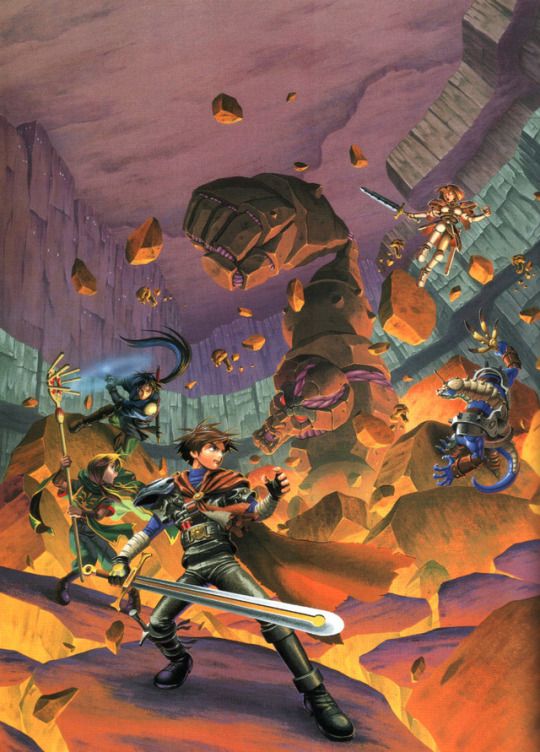
Written in 2020
 Sega joined the group of RPG creators with Phantasy Star in 1987, which was eventually translated to English and published in North America and… Europe (1988)! In fact, the first console RPGs that were officially released on game consoles in Europe could be played on the Master System.
Sega joined the group of RPG creators with Phantasy Star in 1987, which was eventually translated to English and published in North America and… Europe (1988)! In fact, the first console RPGs that were officially released on game consoles in Europe could be played on the Master System.
And it was not only Sega’s own RPG brand that was being published, they also released the first Ys game (1988) on their 8-bit home console.
And while Nintendo didn’t show any interest in bringing the Final Fantasy or Dragon Quest titles to Europe, Sega continued their RPG spree on the Mega Drive with releases of Phantasy Star II (1990) and III (1991) on the Mega Drive and eventually even Shining in the Darkness (1991) on that console as well.
To be fair, you could count Zelda II as an early version of an action RPG, as it has some more elements of a console RPG game (like experience and extended abilities), but aside of this game, Nintendo released no RPG at all – and it was Nintendo who decided which games were being released on the markets.
But in 1993, things changed. Nintendo had released the first Seiken Densetsu under the name “Mystic Quest” in Europe, as an attempt to establish fantasy and role-playing games under that name.
And after Square Enix had developed Final Fantasy: Mystic Quest in the USA as a kind of tutorial RPG with very limited features and easier gameplay, Nintendo of Europe decided to publish the game as well.
Nintendo started a huge advertisement campaign when the development and translation of Mystic Quest Legend, as the game was now known in Europe, finished.
 Article in German "Club Nintendo" magazine, 1993. Picture from Binary Scroll.
Article in German "Club Nintendo" magazine, 1993. Picture from Binary Scroll.
German "Club Nintendo" magazine (basically the “Nintendo Power” of Germany, published by the company itself) launched a huge "Role-playing games? Well yes, thank you!" campaign where they explained in detail how a menu-based combat system works and why RPGs are different from games such as Zelda or Star Tropics.
 There was also a huge campaign with TV spots during afternoon kid’s programme or between Saturday Morning cartoons. Yet, reception of the game wasn’t particularly great (just like in North America), but at least now there was also a console RPG available for the SNES.
There was also a huge campaign with TV spots during afternoon kid’s programme or between Saturday Morning cartoons. Yet, reception of the game wasn’t particularly great (just like in North America), but at least now there was also a console RPG available for the SNES.
Yet, the number of turn-based or menu-based RPGs on the SNES released in Europe was very limited. Aside of said Mystic Quest Legend, there was a Shadowrun game released as well as Breath of Fire II and Lufia late in the console’s lifespan, and maybe a few more.
Actually, the Lufia game released is Lufia II, but as Lufia was not released in Europe and part II is a prequel, the game was marketed as plain "Lufia".
Some action RPGs have been released after that, though, like Secret of Mana, Soul Blazer, Illusion of Time and Terranigma. But there has been no SaGa game, no Chrono Trigger, no Final Fantasy VI or IV (not even with the wrong numbering), no Dragon Quest… nothing.
Even after Nintendo started releasing some console RPGs in Europe, Sega continued to provide fans with some games in that genre. Shining Force (1993) and Shining Force 2 (1994) were strategy RPGs with a heavy focus on classic RPG gameplay, Phantasy Star 4 (1995) was the pinnacle of the original saga. But games like Lunar: The Silver Star or Ys III were not being published here.
Some games not released in the 16-bit era (that have been published in North America) include
 With the rise of the new gaming consoles in 1994 and 1995, mainly the Sega Saturn and the Sony PlayStation, things lightened up a little. Sony wasn’t as reluctant as Nintendo in publishing RPGs, and also there weren’t that much restrictions for publishers as to which game they could or couldn’t publish.
With the rise of the new gaming consoles in 1994 and 1995, mainly the Sega Saturn and the Sony PlayStation, things lightened up a little. Sony wasn’t as reluctant as Nintendo in publishing RPGs, and also there weren’t that much restrictions for publishers as to which game they could or couldn’t publish.
Sega struggled with the Saturn as a whole, but a few RPGs were published here in Europe as well. There was Shining The Holy Ark and Shining Force III, for example. And even fringe games such as Panzer Dragoon Saga have been released. But again, no Lunar, no Ys – games that were published in the US often didn’t find a publisher here in Europe, and Sega was reluctant to go the extra mile by releasing some RPGs in Europe on their own.
In the latter half of the 90s, there were more and more RPGs that would be released in Europe. In May of 1997, Suikoden hit our shelves (and man did I pre-order that game!), in November that same year, the first main line Final Fantasy game was released here: Final Fantasy VII. It was an incredible success and really motivated some more companies to release their console RPGs in PAL territory.
1998 saw the release of Breath of Fire III, which was available as a very early collector's edition with a dragon figurine and a pin. Ubisoft secured the rights for Grandia and released that game in 1999. Suikoden II was in store shelves in late 2000, and even Breath of Fire IV got a late release in 2001 on the original PlayStation.
Some RPGs in the 32-bit era that have not been released in Europe (but released in North America) include:
The situation was better, but still not good.